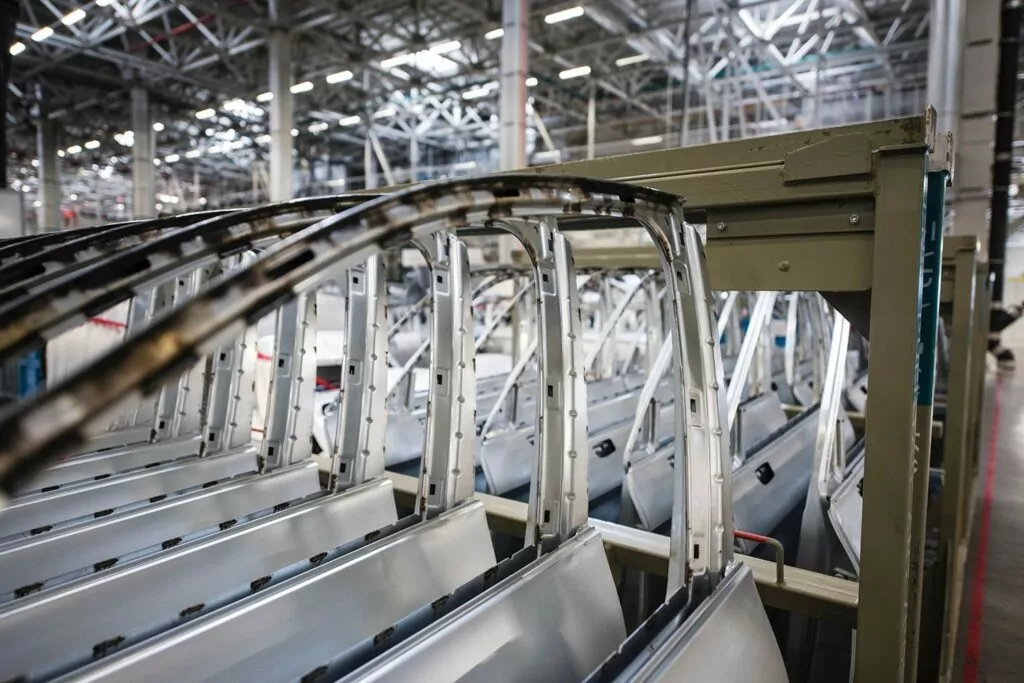It’s not an overstatement to suggest that technology is fundamentally changing the way the manufacturing sector operates. Advances in IoT‚ Big Data‚ AI/Machine Learning and digital connectivity are fueling the fourth industrial revolution‚ where digital systems and physical processes are combined at scale.
In 2019 81% of manufacturers reported they were ready to invest in new digital technologies to boost productivity‚ quality and traceability. It is reported that companies that fail to tackle digital transformation are seeing profits erode by as much as 5.1%.
The need for digital capabilities has strengthened in 2020 as companies look to fuel rapid change and build resilience in response to the Coronavirus pandemic.
We believe the following technology trends should be the key focus for manufacturing leaders looking to survive and ultimately thrive over the next few years.
Adapting to Global Disruption Through AI
2020 has seen global supply chains disrupted on an unprecedented scale as Coronavirus continues to impact almost every manufacturer‚ albeit in different ways.
Some have experience skyrocketing demand for their products‚ while others have seen orders plummet. This is also compounded by the increasing uncertainty surrounding the supply of raw materials‚ especially as markets such as China were severely impacted by restrictions early on in the pandemic.
According to a study by PWC 70% of companies are using AI in at least one area of supply chain optimisation and we believe there are significant opportunities for manufacturers to use predictive and intelligent systems to forecast demand and forewarn of issues.
For example‚ tracking an organisation’s inventory and assets in real-time provides faster notice when a disruption does occur‚ especially if paired with machine learning and regressive models that can predict outcomes. This data can then be made available to other systems through cloud-based technologies and we are also witnessing increasing demand from manufacturers who wish to invest in real-time dashboarding solutions to ensure all staff have access to key information.
Analysis of real-time data is also of increasing importance in a scenario where there are no historical precedents. It’s no longer enough to look at previous sales statistics to forecast demand. Manufacturers will need to understand wider market trends and build models that connect economic circumstances to on-the-ground resource and sales planning systems.
Capturing and Leveraging Data at Scale
Many large manufacturers are starting to use data analytics to optimise factory operations‚ boosting equipment utilisation and product quality through real-time management of resources.
However successful data collection and storage remains an industry issue. A recent Mckinsey investigation outlines how one oil-and-gas company discards 99 percent of its data before decision-makers even have a chance to use it.
To solve the issue of data leakage‚ organisations can invest in Data Lakes‚ which are centralised repositories that allow organisations to store structured and unstructured data at any scale. This means you can store data in a raw state without knowing the exact questions you might need answers for in the future. Raw data can then be extracted and cleansed to power machine learning‚ predictive analytics‚ data discovery and profiling algorithms.
Data Warehousing is a slightly different type of database which is better suited to relational data coming from transactional systems‚ such as planning and scheduling software. This data is highly curated‚ with a defined schema‚ which means it can be easily pulled into batch reporting‚ business intelligence and visualisation platforms.
Depending on specific requirements‚ a typical manufacturer will require both a data warehouse and a data lake to satisfy all analytics and algorithmic requirements.
Proving Sustainable Credentials
If manufacturers are to meet soaring customer demand for more transparency throughout the entire product lifecycle‚ then they must be capable of increasing visibility throughout the supply chain.
Blockchain technologies offer a compelling solution by functioning as a single source of truth‚ therefore increasing transparency and trust at every stage. This could allow multiple stakeholders to efficiently trace the supplier of faulty parts or clearly identify ethical issues across entire industries.
Alongside increasing transparency‚ we believe there are a number of clear use cases for technology in helping organisations meet their zero-carbon goals. For example‚ a number of software tools can integrate into existing ERP systems which can help organisations determine the carbon footprint of each supplier and calculate their carbon emissions per pound spent.
IoT devices and sensors can also be deployed and integrated into wider systems to detect issues such as the emission of harmful gases‚ alongside monitoring energy use and costs. Data collected by devices regarding these issues can be made available in real-time‚ allowing manufacturers to quickly detect and rectify environmental issues – leading to greater compliance and less risk of legal action.
Leveraging 5G to Embrace Automation
IOT devices are relatively easy to deploy across a range of factory scenarios‚ however one of the largest difficulties up until recently has been the infrastructure required to connect individual devices and wider systems.
While 4G has undoubtedly provided connectivity‚ 5G has the ability to support a massive number of static and mobile IoT devices with a diverse range of speed‚ bandwidth and quality of service requirements. This flexibility combined with low latency means that there is increased scope to build demanding applications.
We predict that one of the core benefits of this for manufacturers will be the ability to automate‚ control and monitor complex systems in real time. This will increase their ability to automate and ultimately drive efficiency and cost savings through the deployment of smart vehicles and intelligent robotics.
The Ericsson Panda manufacturing plant in Nanjing provides a useful case study of how increased connectivity is used to monitor the location of critical assets‚ the output of workstations‚ stock levels‚ environmental factors and the performance of test fixtures and production tools. By accurately understanding when tools need replacing‚ as opposed to relying on periodic replacement schedules‚ Ericsson anticipates it will cut manual maintenance work in half and save approximately $10‚000 annually on screwdrivers alone.
Taking The Long View
It is clear that manufacturers with accessible data and advanced analytical capabilities will be able to respond more quickly‚ accurately and successfully to COVID-19 disruptions.
However we believe that these capabilities also offer significant long-term competitive advantages to manufacturers willing to invest in technology while markets remain in turmoil.
However success will not be based on levels of CapEx alone‚ there must be a clear assessment of which of these disruptive technologies will strategically drive the most value‚ innovation‚ and growth for the organisation in the short to long term.
This is where third-party technology specialists can add significant value by helping manufacturers clearly identify and deliver on the unique opportunities and challenges within their business.
Find out how we help household brands including Warburtons use technology to improve efficiency and reduce costs and read more about our technology services for the manufacturing industry.





